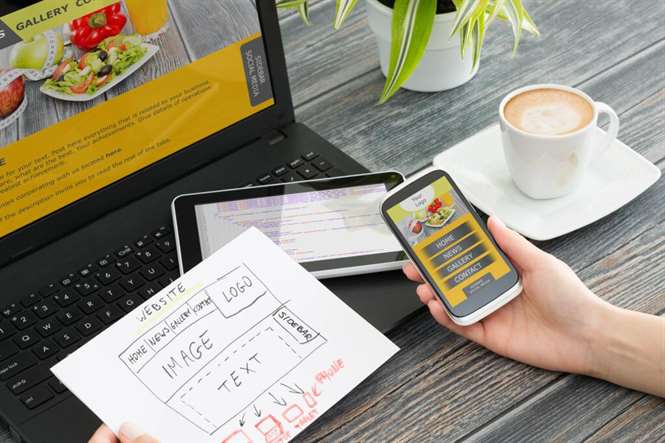Content
The appeal is obvious – we know that consumers are always looking for new and more engaging ways to connect with brands they want to do business with. The metaverse, with its focus on customer experience and one-to-one connections, is another channel of communication. Crucially, https://globalcloudteam.com/ it’s one where, unlike social and search, which are pretty well sewn up by the likes of Google and Meta, there is still everything to play for. No one knows for sure what the winning strategy will be yet, but one thing is for certain – you’ve got to be in it to win it.
Of course, in the 50s, cloud computing was far from the modern version most of us get used to implementing today. Then, mainframe computers were huge and extremely expensive, which is why companies utilized an increasingly complex and ever-changing system of mainframe computers to process data. Which cutting-edge areas of technology will be among the five most important in 2023? Exploring the Metaverse would require users to have access to a high-speed internet provider.
Likewise, e-commerce brands have launched virtual stores where buyers can examine products and make a good buying decisions. For instance, a clothing brand can offer fitting rooms and showrooms that resemble the real showrooms. Front-end developmentrefers to the development aspect that focuses on visual elements of a decentralized application that users top technologies in metaverse will interact with. Blockchain enables interoperability across various metaverse projects, allowing them to interact seamlessly and perform actions like sharing arbitrary data, related information, and resources. Simply put, IoT is a system that takes everything in our physical world and connects them to the Internet through sensors and devices.
Top 10 Metaverse Companies in Global Market 2021
When interacting with technology, a user takes note of a few aspects concerning data management. Web 3.0, generally referred to as Web3, is the next generation of the internet with a focus on decentralization, privacy, security, and machine learning. It helps decentralize the metaverse and makes users the ultimate owners of their data. Horizon Worlds is what Meta’s earlier social VR apps like Oculus Rooms and Oculus Venues have evolved into. The former, conversely, befits the metaverse criterion better and is focused on user-generated content . UCS platforms allow users to post content in any form whether text or media for other users to interact with.
Fortnite game in particular extended its activities on a wider note, that hosted brand events, activities, and more. In terms of identity authentication and privacy control, like in the real world. The crisis exists everywhere, and as people traverse with digital world avatars, as everyone masks it’s kinda tricky to prove one’s identity. IoT seamlessly connects with the 3D world to a larger extent that stimulates real-time experience in space. The application collects data and feeds it to the metaverse adjusting precisely to real-world conditions.
- Implementing IoT can seamlessly connect the 3D world to many real-life devices, enabling the creation of real-time simulations in the metaverse.
- The metaverse can never experience issues like a single point of failure, limited scalability, or delay in process execution.
- Meta is already working on a haptic glove that will pair with a headset to create a more immersive experience.
- Today, IoT is connecting thermostats, voice-activated speakers, medical devices, and much more to a wide range of data.
- NPCs are common in most games, which are programmed to respond to players’ actions and respond accordingly.
- The use of these technologies in Metaverse is obvious, and both the Metaverse and immersive tech will continue to evolve.
- To investigate any events, blockchain traceability is undoubtedly the best weapon Metaverse has.
Its ease of use is what makes it a preferred option over competitors such as Unreal Engine. NVIDIA is a very prominent company within the gaming industry, widely known for its graphical processing units. However, the company has also been making big waves in the Metaverse market by gearing up to make a tool to facilitate 3D creations.
Technologies That Constitute The Metaverse
3D reconstruction helps in creating virtual spaces that are realistic and look natural, leading to the formation of a digital ecosystem that is almost like the real world. With the help of special 3D cameras, one can render accurate models of objects, buildings, and physical locations. Computers then process the 4K HD photos captured and the 3D spatial data for generating a virtual duplicate or digital twin of the real physical world that can be experienced by the users. However, while AR implementation needs only a camera-enabled device, VR requires more expensive equipment like multi-modal screens and HMDs. Metaverse technology is more likely to employ a combination of AR and VR, popularly called Extended Reality .
3D reconstruction captures the shape and appearance of real objects and will make the metaverse a reality. The technology includes tools like 3D modeling to provide a three-dimensional framework and prototype of a specific process or product. For perspective, the global 3D reconstruction technology market is expected to double over the next several years to roughly $2 billion in 2028, according to a SkyQuest Technology Consulting report. Before taking a single dollar or swiping a credit card, they may have outlined its own NFT system.”
AR and VR
Formerly known as Facebook, Meta’s CEO Mark Zuckerberg announced their commitment toward “the future of social media” in October 2021. This metaverse company rebranded itself to ‘Meta’ to signify its strategic plan to create their own Metaverse to change the way users interact, work, play, and shop online. 3d modelling is creating a 3d model of an object, whereas reconstruction refers to assembling the 3d representation from a 2d model. 3d modelling and reconstruction power metaverse in many ways, like creating virtual models of real-world objects and places and designing and representing objects in detail. It can be used for various purposes, such as 3d printing, gaming and computer graphics.
Then second, this metaverse applies a hardware device & it enables the real world to be communicating. It means the digital content is applied so that users can control the content displayed virtually and interact with it within a real-life space. Third, it is information about anything and everything in the physical world and knowledge about the user such as the user’s schedule, location, habits, and interests.
Top 6 Technologies in the Metaverse
Founded in 2013 and headquartered in 2f Bldg B Xinyi Plz No. 1978 Lianhua Rd, Shanghai, Shanghai, China. Shenzhen Zqgame Network Co.is a Chinese company Founded in 1997 and headquartered in 2003 and headquartered in 43 layer A1 Bldg C, Shenzhen, Guangdong, China. Specializing in the production of online multiplayer games as well as other mobile and browser games. DToCs and digital humans can interact with customers to aid in areas, such as financial transactions, concierge shopping experiences or patient health monitoring. Enterprises are starting to place bets on the metaverse, but don’t overcommit in these early days of nascent metaverse technologies. Appventurez is a well known mobile app development company in the USA and India that works to build strong, long-lasting relations with its clients in different locations.
Blockchain can be used to collect, exchange, manage, and reconcile value within a metaverse. A cryptocurrency also acts as a medium of exchange in the virtual world, as real money does in the real world. The Metaverse is a platform that sounds like a sci-fi concept, but shockingly, it’s as real as the internet.
This is due to the fact that the vast landscapes and environments would require a large amount of data to render. The community-led platform allows users to purchase virtual ‘land’ to shape their own experiences. Microsoft is another tech giant that has set its eyes on leading the next digital revolution. With their focus on “mixed reality,” Microsoft aims to utilize its HoloLens to combine AR with real-life applications. Shortly known as BCI, the Brain-computer interface is the latest technique to interact with your computer. It reads the electrical signals from your brain and translates them into a command that a computer can understand.
Blockchain:-
AR can play a crucial role in expanding the metaverse experience by enabling physical simulations with VR equipment. As a result, users can feel, hear and interact with the virtual spaces in metaverse as if they are actually present there. The combination of VR technology in the metaverse alongside AR would possibly drive massive investments from companies in development of AR and VR equipment. Metaverse is an arrangement of numerous elements of technology such as virtual reality, augmented reality, and video where consumers ”live” inside a digital universe. It is possible that users have already seen this concept revealed in movies and on television programs.
Facebook is a platform where people can interact with each other, build communities and socialise while sitting at home. Here, we look at the top companies developing technology to drive forward the metaverse and make virtual experiences feel real. When millions of people are having virtual experiences around the world, the cloud simply can’t handle all of the processing power necessary to maintain the system.
In the future, the Metaverse can improve on this technology by fully immersing you in a virtual representation of the store in VR. 2023 is likely to bring further interesting developments in this clash of digital cultures. Cryptocurrency has the potential to encourage employment in the metaverse in the future.
For example, malicious actors or even bots could enter the metaverse pretending to be someone else. They could then use this to damage their reputation or to scam other users. Much like the metaverse concept, it produces an entirely computer-generated virtual environment. Technology provides a decentralized and transparent solution for digital proof of ownership, digital collectibility, transfer of value, governance, accessibility, and interoperability.
The need for safe distancing has made VR more pressing in the last few years. As a result, several in-person events were VR-enabled allowing visitors to attend and interact with others just as they would in real life. Apart from gaming, industries such as fashion and travel continue to reap benefits from VR and act as a gateway into specific offerings of brands.
Key Technologies for the Metaverse
The Metaverse is an open, shared, and persistent virtual space where users can exist as digital avatars. The premise of the Metaverse is that users can do everything in the virtual world that they can in the real world. While B2C companies continue to build a presence in the Metaverse, we are still a few stop lights away from a fully functioning virtual world. Tech experts have predicted certain challenges that are likely to be encountered by a metaverse. The major challenges include controlling the privacy of users and businesses and authenticating the identity of individuals who are moving around the virtual world disguised as digital avatars. As a result, unscrupulous persons or even bots can explore the metaverse under the disguise of an individual, and scam other users or damage the reputation of business brands.
IoT has the ability to intake every element of the physical world and connect them through the internet via sensors and other devices. These devices as they are connected possess unique identifiers and the ability to send and receive information. The space that made everything possible, from remote working to virtual concerts, digital identities, anything and all in the comfort of your home. This technology used in commercial spaces facilitates a smooth experience with fewer delays. Moreover, it ensures efficiency and an immersive gaming experience for its users. Digital authentication is becoming more secure and unbiased with blockchain technology.
While some people believe that technologies will replace humans entirely, others think that they will simply augment human capabilities. Either way, it’s clear that future life is going to be very different from today because the transformation has already started. With cloud computing, users no longer need to worry about losing files because they can access them anywhere at any time.
It is one of the best tools that make the virtual world exist and makes interaction possible with it in the metaverse. Augmented reality helps users with physical simulations, and virtual reality helps with 3D simulations. Most metaverse applications run on blockchain technology because of its transparency. Blockchain game developers find this technology the best as it provides the decentralized environment necessary for the functioning of the metaverse.
While in the metaverse to reconnect with reality, through an immersive experience, AI and ML have a prominent role in the outcast. Keeping technicalities aside, there is in everyone unsung dreams and imagination. A space of one own creativity that in a moment can slide waves to rain, and thunder to cuckoo. We could say the spark behind this idea is the cool cult of creative freedom that has been taking an upper edge. And now that it has been exposed to a much wider space, the market is flooding with joy.



